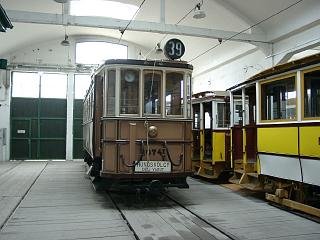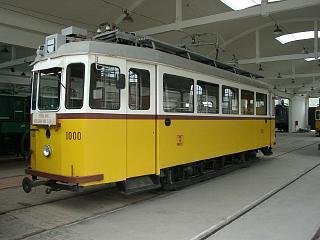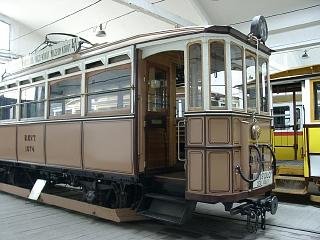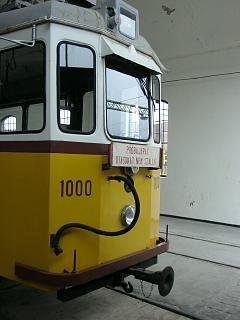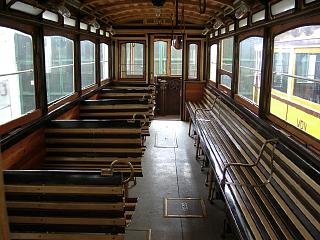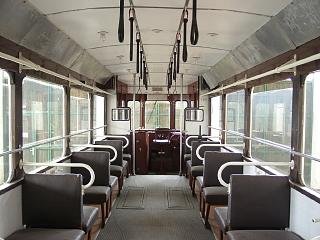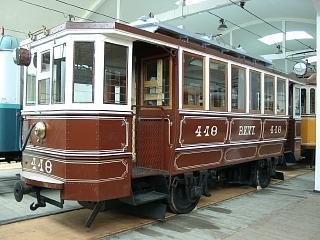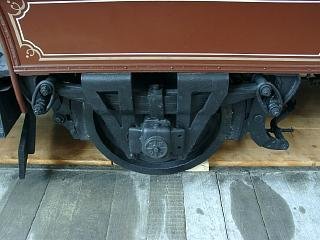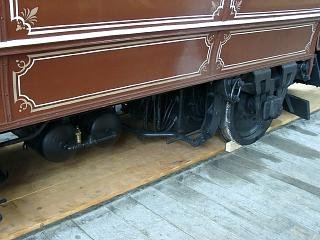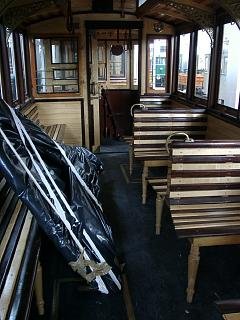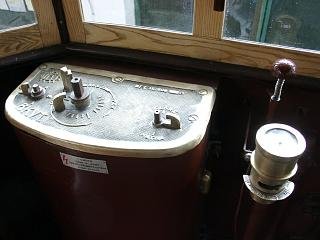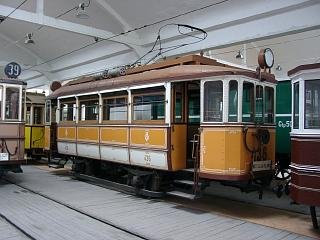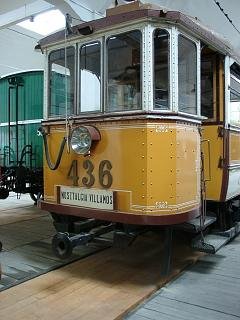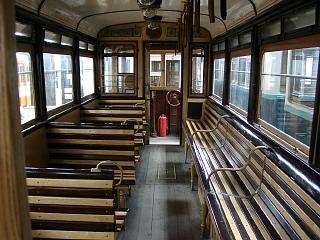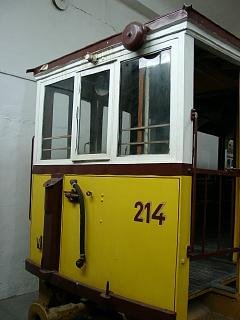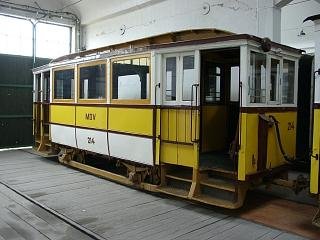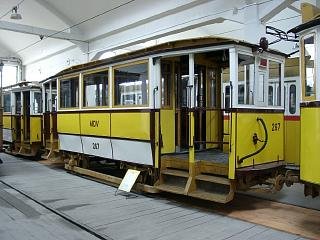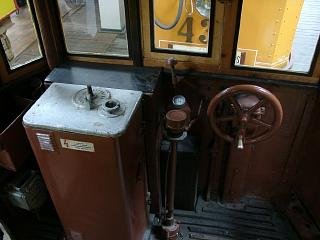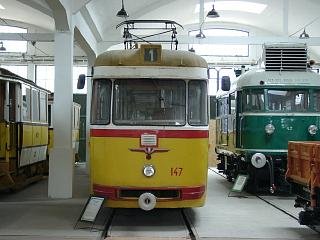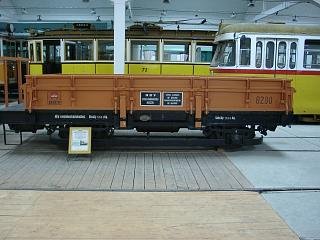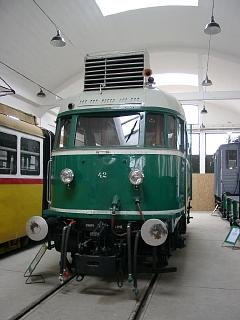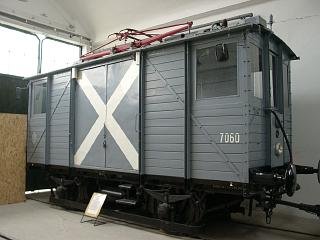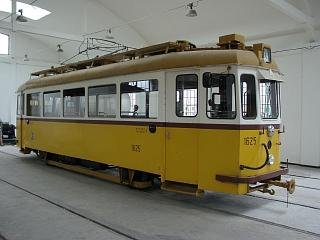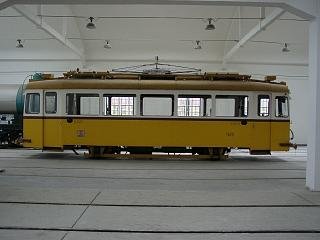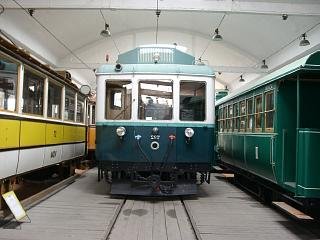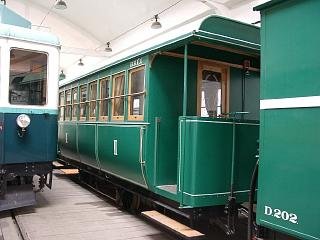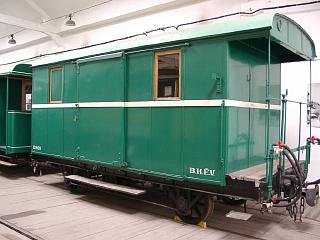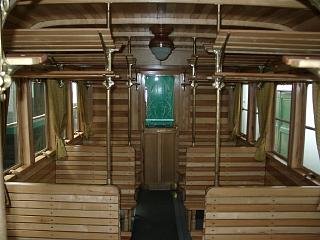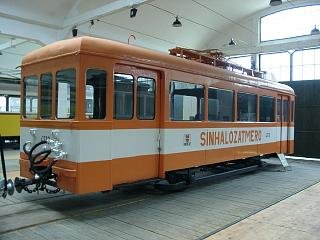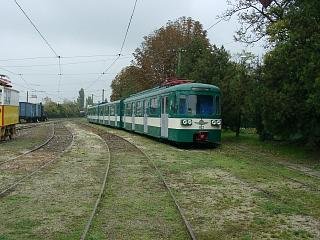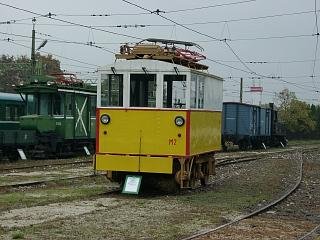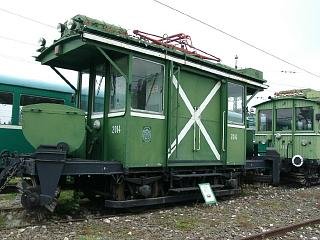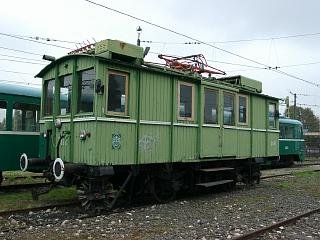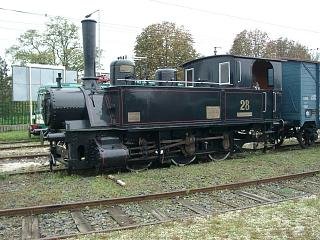I've allready done two pages about the Budapest Urban Public Transport Museum at Szentendre, so what's the point of doing another one? Better pictures, I would say! My earlier photos of this wonderful museum were done using a normal 35 mm camera and ISO-100 negative, with the results then scanned on a low-quality flatbed scanner. This time I used a digital camera and a tripod, which made it possible for me to experiment with the light settings and perspectives. I think you can see the difference :-) Please, take a few minutes for these pages, even if you saw the previous ones about this nice tram and HÉV (suburban commuter train) museum!
My personal favorite is the BKVT 1074, a wooden-frame streetcar built in 1912. This type was one of the most reliable units of hungarian tram history ever - some cars from the 1000-series were retired in as late as 1984! Of course by then they were modified a few times, and looked like this:
FVV/BKV number 1000 features a body with a steel frame designed in the 1950's, but in its heart, it's the same tram!
In fact, none of the old wooden-bodied 1000ers were preserved (all of them was converted), so this one was re-re-built into this!
Number 1000 was originally 1080 but was renamed in the 1920's, so it's the first and last 1000er at the same time - in a strange way...
In its heydays the 1000ers were the biggest and strongest streetcars in Hungary: they were able to pull two trailers up on some of the steepest routes of Budapest. Eighty pieces were built, and all of them had a long life - even the one (number 1019) that crashed into the river Danube in 1944, when the Margit híd (Margarite bridge) was blown up by german military during peak-hour traffic!
This is what the rebuilt 1000ers looked like in the seventies and eighties.
Streetcar 418 has also had a busy life: it was built in 1897 for the company BKVT as Type "D". It had a "Dresden-type" undercarriage at that time. Later it was rebuilt to a normal 2-axle in 1906, its designation from that point on was Type "Q". Around 1925 the motors were removed as it was turned into a trailer (Type "H"). After WW2 it had spend most its life on a narrow-gauge railway as a passenger car, until it was reconverted into a motorcar in 1989.
The bearing suspension of one axle.
The air tanks of the brake system can clearly be seen.
That big, black, tightly sealed package in the cabin is the new overhead current collector. Notice the cast-iron ceiling supports over the seats too, they're quite nice for a public transport vehicle!
The BFZ controller switch to the left, and the brake lever and air pressure gauge to the right. The shining silver button with the spring underneath rings the bell on the front.
Streetcar 436 belonged to the other transportation company in Budapest, BVVV. It was built in 1913 and was the first car of the series, which was a new version of previous BVVV trams.
It was renumbered to 2900 by the unified transportation company BSZKRT. In 1961 it was turned into one half of a twin set, and in 1987 it was rebuilt to it's original state - by then it was called 2993. The other cars of the series were scrapped by 1980 with the exclusion of 2964, which went to Amsterdam - it might be still in use there as a tourist tram, but I'm not sure.
The driver's place of 436. Until a few years ago this car could be seen on hired rides, now it just stands here.
The interior of this 1913-tramcar is rather simple - but of course not in today's standards :-)
Trailer number 214 from Miskolc is an old working horse!
Originally it was used in Budapest as BSZKRT-4908, and was transported to Miskolc in the late fifties. Unfortunately its look does not reflect any of its pervious states...
Another trailer from Miskolc with roots in Budapest is number 267, built for BKVT in 1911. Again, not in a really authentic look.
Motorcar number 72 is a different thing: it really looks like the way it was used in Miskolc, where it had served from 1910. This is a robust wooden-frame vehicle built by Ganz; some similarities with BKVT-1074 we just saw a few pictures ago can be seen. This type appeared in the seventies in a TV-series for kids, in which some youngsters turned a surplus tramcar into their club house. This of course made a great impact on children: I also wanted a weekend house like this for me when I was a kid... :-)
The driver's place...
... and the passenger cabin of the Miskolc motorcar.
A "home-made articulated" - again from Miskolc. This is the two-way version of the type.
Railgrinder Nr. 7007. The name refers to the fact that it was used for buffering deformed tracks by grinding them straight. Originally this was a "Muki" (2-axle electric loco), but it was rebuilt in 1958 using a body used for refurbished passenger cars. Of course the seats were replaced by a big water tank used for ballast weight and cooling. They were used until the late eighties.
This picture gives you a slight hint of the variety of vehicles displayed here! In the background, you can see the Ganz 2-axle from Miskolc, 1911, to the left the front side of BVVV-436, to the right the "home-made articulated". In the foreground: an old 2-axle lowry.
Number 42 from the HÉV diesel loco type DL V ("D L five").
HÉV trains used a variety of strange mechanical, pneumatical and electrical couplings, as you can see here...
Muki number 7060.
This tram (BKV number 1625) may look like the twin brother of number 1000 we saw before, but its's not: it is even older! It was built in 1896 for BVKV, a suburban subsidiary of BKVT. It has had separated cabins for passengers riding on first and second class, and had bogies back then. Later it was rebuilt with 2 axles only and with the passenger classes removed.
This was the first series to be re-built with the new steel-frame body in 1955-56. Of course this new body was unified therefore the similarity with the rebuilt 1000ers. The 1600ers were scrapped in the early eighties.
HÉV diesel motorcar from the Type DM XII.
BC passenger and...
... an old baggage car from the steam-engine days of the HÉV.
The interior of the passenger car we just saw.
This service vehicle (track-current measurement) is about the only remaining car from the network of Pécs (a city in Southern Hungary), where the tram service was closed in the early sixties. It was used as a trailer there. After it was recommissioned to Budapest, it was used on the (since closed) Csepel-Pesterzsébet HÉV service (number 3155, Type P XX) until 1978.
Let's go outdoors! Here a HÉV EMU of Type M IX.
M2...
... 2014...
... and 2011 are all snowsweepers. The first was used in Miskolc, the other two on the Budapest HÉV routes.
This steam engine was built in 1894 for the Haraszt-Ráckeve Railways, the predecessor of the Ráckeve HÉV line.
Back to the main page
HamPage
